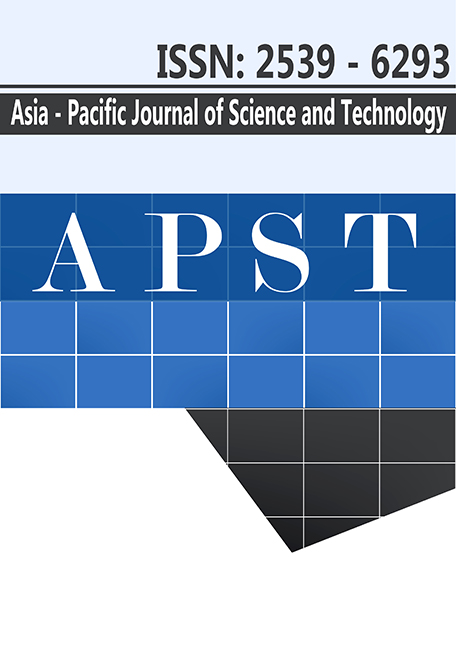A weighted goal programming model for maintenance workforce optimisation for a process industry
Main Article Content
Abstract
The recent upsurge in economic distress of organisations, and particularly the sustainability challenges faced by them raises new concerns that strongly motivate maintenance workforce structural re-modelling. Maintenance workforce planning is an interdisciplinary area spanning maintenance, industrial engineering, and human resource planning. Various analytical models in the literature have been developed, re-modelled and implemented for maintenance workforce planning. However, new research insights focusing on budgets, worker distribution and performance metrics (availability and quality of work done) as well as hiring and firing costs are keenly needed. By responding to this call, the current communication adopts a case-study approach in the optimisation of maintenance workforce variables based on weighted goal programming, genetic algorithms (GA) and Euclidean distances with these parameters treated in a unique manner. An optimisation model selected from the literature was used to formulate a model for a brewery plant maintenance system. The formulated model used a genetic algorithm (GA), particle swarm optimisation and a differential evolution algorithm. The results obtained were compared. It was observed that GA was the most suitable solution method. The GA results showed that the maximum number of full-time workers hired or fired for the different worker categories were the same (one worker). Worker efficiency and availability were both above 80%, while the quality of work done was above 70%. The results showed that the solutions from the weighted goal programming, GA and Euclidean distance were satisfactory.
Article Details
References
[2] Staxk, C., Zimmermann, J., Morlock, M., 2006. Models and methods for workforce scheduling: An application to casino operations. Perspectives on Operation Research, 239-253.
[3] Al-Shayea, A.M., 2012. Maintenance capacity planning: Determination of maintenance workforce. Engineering 4, 37-43.
[4] Mansour, M.A.A-F., 2011. Solving the periodic maintenance scheduling problem via genetic algorithm to balance workforce levels and maintenance cost. American Journal of Engineering and Applied Sciences 4, 223-234.
[5] Safaei, N., Banjevic, D., Jardine, A.K.S., 2012. Multi-thread simulated annealing for a bi-objective maintenance scheduling problem. International Journal of Production Research 50, 63-80.
[6] Othman, M., 2012. Integrating worker differences into workforce planning [unpublished dissertation]. Concordia University Montreal, Quebec, Canada.
[7] Othman, M., Gouw, G.J., Bhuiyen, N., 2012. Workforce scheduling: A new model incorporating human factor. Journal of Industrial Engineering and Management 5, 259-284.
[8] April, J., Better, M., Glover, F., Kelly, J.P., Kochenberger, G., 2010. Strategic workforce optimisation: Ensuring workforce readiness with opt force.
[9] Hariga, M., 1994. A deterministic maintenance scheduling problem for a group of non-identical machines. International Journal of Operations and Production Management 14, 27-36.
[10] Adebiyi, K.A., Ojediran, J.O., Oyenuga, O.A., 2004. An appraisal of maintenance practice in food industries in Nigeria. Journal of Food Engineering 62, 131-133.
[11] Barlatt, A.Y., 2009. Models and algorithms for workforce allocation and utilisation [unpublished dissertation]. The University of Michigan, USA.
[12] Van Den Bergh, J., De Bruecker, P., Belin, J., De Boeck, L., Demeulemeester, E., 2013. A three-stage approach for aircraft line maintenance personnel roistering using MIP, discrete event simulation and DEA. Expert Systems with Applications 40, 2659-2668.
[13] Cohn, A., Barnhart, C., 2003. Improving crew scheduling by incorporating key maintenance routing decisions. Operation Research 51, 387-396.
[14] Choahan, M., Goyal, M., 2010. Skill capacity planning and transformation scheduling of IT workplace under stochastic learning and turnover; 49th IEE Conference on Decision and Control, 4145-4150.
[15] Ighravwe, D.E., Oke, S.A., Adebiyi, K.A., 2015. A genetic algorithmic approach for the optimisation of maintenance technician’s workload with severity rate consideration. International Journal of Management Science and Engineering Management.
[16] Hargaden, V., Ryan, S., 2011. Workforce capacity management in service operations. In: Production and Operations Management Society (POMS) 22nd Annual Conference.
[17] Wu, Z., 2008. Hybrid multi-objective optimisation models for managing pavement assets [unpublished dissertation]. Virginia Polytechnic Institute and State University, USA.
[18] Ighravwe, D.E., Oke, S.A., Adebiyi, K.A., 2016. A reliability-based maintenance technicians’ workloads optimisation model with stochastic consideration. Journal of Industrial Engineering International 12, 171-183.
[19] Kennedy, J., Eberhart, R., 1995. Particle swarm optimisation. In: Proceedings of the Fourth IEEE International Conference on Neural Networks, Perth, Australia; IEEE Service Centre, 1942-1948.
[20] Cormier, G., Boudreau, R., Theriault, S., 2001. Real-coded genetic algorithm for Bragg grating parameter synthesis. Journal of Optical Society America B 18, 1771-1776.
[21] Chen, Z-Q., Wang, R-L., 2011. Two efficient real-coded genetic algorithms for real parameter optimisation. International Journal of Innovative Computing, Information and Control 7, 4871-4883.
[22] Engelbrencht, A.P., 2007. Artificial intelligence: An introduction. England: John Wiley and Sons Limited.
[23] He, M., Hu, Q., Wu, X., Jing, P., 2014. A combination algorithm for selecting functional logistics service vendors based on SQP and BNB. Journal of Chemical and Pharmaceutical Research 6, 2013-2018.
[24] Belmokaddem, M., Mekidiche, M., Sahed, A., 2009. Application of a fuzzy goal programming approach with different importance and priorities to aggregate production planning. Journal of Applied Quantitative methods 4, 317-331.


